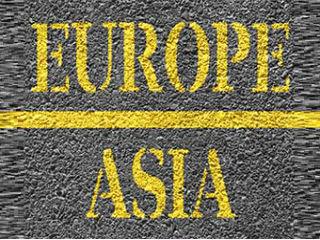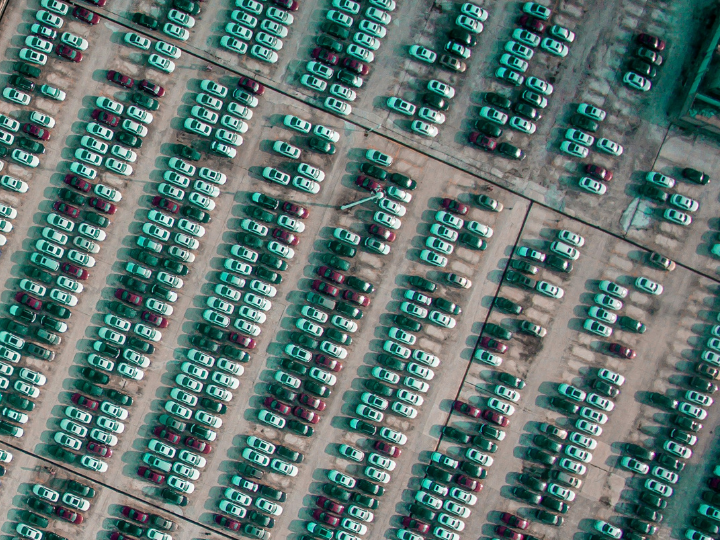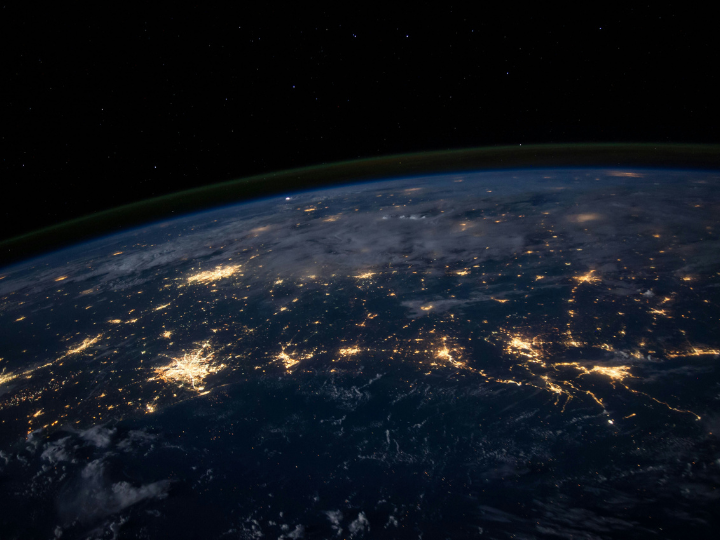For the first time in centuries, Eurasia is again becoming the most dynamic region in the world

The main emerging challenge here is that as China becomes so deeply involved financially in other countries it risks being entangled in local politics. It will be increasingly unable to remain neutral, especially in countries with relatively weak states and strong sectarian differences. This could produce problems. Controversy has already emerged in countries ranging from Zambia to Pakistan and Sri Lanka over China’s investments, and we can expect this to intensify as the country builds its own global financial architecture.
by
Haroon Sheikh*
After five centuries of what could be called ‘the Atlantic Era’, a shift towards the East has been happening steadily over the last few decades. But recently momentum is speeding up and tectonic shifts are occurring. Three important current trends are emerging in the region.
First, economic growth is returning to Europe. Its GDP growth surpassed that of the United States in the first quarter of 2017.
Second, the elections of this year have fended off the feared rise of anti-European populist parties in the Netherlands and France. There is something of a ‘backlash against the 2016 backlash’. Although the Netherlands does not have a new government yet, Geert Wilders’ anti-immigrant PVV did not become the largest party, as polls had predicted. In France liberals have come to power.
Third, the external environment is also conducive to more European unity: remaining tensions in the East and the Brexit and Donald Trump’s erratic policy in the West are pushing Europe, in the words of the German chancellor Angela Merkel, to “take fate into its own hands”.
After the German elections in September, European politics can stabilise and we can expect these three drivers to lead to new momentum for European initiative and a more unified European Union. Risks remain though, as Europe’s momentum is fragile. Although the populists did not win, their share of the vote did increase and the elections in both the Netherlands and France dealt a heavy blow to traditional ruling parties. With fractured parliaments and new parties, the ability to govern might become a problem in the future.
The second trend concerns China’s vast economic diplomacy. China’s Belt and Road Initiative (BRI) is estimated to be the largest foreign investment drive by any country in history, including America’s post-Second World War Marshall Plan. The initiative includes investments from Central Asia to South Asia and Eastern Europe.
What has been particularly notable over the last year, however, is the speed at which China’s investments are shaping the traditional American influence sphere. Since US withdrawal from the proposed Trans-Pacific Partnership trade deal, China is spearheading economic integration in the Asia-Pacific. Under President Rodrigo Duterte, the Philippines is drawing closer to China. South Korea’s new President Jae-in Moon is also aligning his country closer to China, and the Japanese Prime Minister Shinzo Abe has also responded positively to cooperation under the BRI.
The main emerging challenge here is that as China becomes so deeply involved financially in other countries it risks being entangled in local politics. It will be increasingly unable to remain neutral, especially in countries with relatively weak states and strong sectarian differences. This could produce problems. Controversy has already emerged in countries ranging from Zambia to Pakistan and Sri Lanka over China’s investments, and we can expect this to intensify as the country builds its own global financial architecture.
A third (not much noted) trend is the emergence of an active Indian foreign policy. Coming from a relatively isolationist policy, the government of Narendra Modi has become very active with state visits to places like Spain, Belgium and Kazakhstan. Especially notable is India’s policy in its direct environment. The country is developing the Iranian port of Chabahar, which is linked to Afghanistan and competes with the Pakistani harbour of Gwadar (in which China is involved).
India’s ties are also increasing with the Gulf nations. Together with Japan, India is investing in Africa and the country is developing projects throughout South-East Asia. Drawing the lines between these projects shows a strategy to connect a horizontal line along Asia’s southern coastal region. Put differently, it could make the Indian Ocean truly India’s Ocean. A challenge to this trend will be the growing competition with China in the region.
So what do these trends amount to? On the one hand, we see a more vigorous EU, and on the other, Asian giants reaching out. Could this lead to increasing Euro-Asian cooperation? I think so. European Council President Donald Tusk described the recent meeting between the EU and China as the most productive ever.
Geopolitics brings Europe and Asia closer together and so does economics. Take, for example, the recent announcement of cooperation between Chinese search-engine Baidu and German manufacturing company Bosch in the field of artificial intelligence for self-driving cars. We might see more of this type of cooperation in the future.
While American companies currently dominate the global online market, in the future the internet will enter the physical world, from cars to homes, the streets and even our bodies. These are domains in which many countries in Europe and Asia traditionally excel. Indeed, with Germany’s Industrie 4.0 and China’s ‘Internet Plus’ policies, these countries are preparing for the transition. Perhaps these countries will be the winners of the next wave of technological innovation and increase cooperation among them.
The fact that Eurasia is again becoming the most dynamic region in the world does not only imply opportunities. Shifting economic and political realities also means greater volatility and potential for conflict. Strong mechanisms of diplomacy are required. Just as the Concert of Europe did in the 19th century after the Napoleonic Wars, a ‘Concert of Eurasia’ could prevent conflict in the future. A strong Europe could play a central role in this.
In the early centuries of the Common Era, there were two powerful empires on the Eurasian plain: the Roman Empire and the Han dynasty. Although contact was limited, the Roman Empire was known as ‘Daqin’ in China. ‘Qin’ refers to the dynasty that unified China and ‘da’ means ‘great’. It suggests the Han saw the European Romans as their equals. Such a situation might again emerge in the future.
*Author of “The Rise of the East: a Look at the New World Order”


